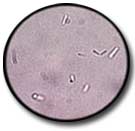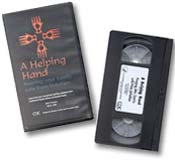
Table of Contents
Botulism is a rare but serious paralytic illness caused by a nerve toxin that is produced by the bacterium Clostridium botulinum. There are three main kinds of botulism. Foodborne botulism is caused by eating foods that contain the toxin. Wound botulism is caused by toxin produced from a wound infected with Clostridium botulinum. Infant botulism is caused by consuming the spores of the bacteria, which then grow in the intestines and release toxin. All forms of botulism can be fatal and are considered medical emergencies. Foodborne botulism can be especially dangerous because many people can be poisoned by eating a contaminated food.
 Clostridium
botulinum is the name of a group of bacteria commonly found in soil.
These rod-shaped organisms grow best in low oxygen conditions. The bacteria
form spores which allow them to survive in a dormant state until exposed to
conditions that can support their growth. There are seven types of botulism
toxin designated by the letters A through G; only types A, B, E and F cause
illness in humans.
Clostridium
botulinum is the name of a group of bacteria commonly found in soil.
These rod-shaped organisms grow best in low oxygen conditions. The bacteria
form spores which allow them to survive in a dormant state until exposed to
conditions that can support their growth. There are seven types of botulism
toxin designated by the letters A through G; only types A, B, E and F cause
illness in humans.
In the United States an average of 110 cases of botulism are reported each year. Of these, approximately 25% are foodborne, 72% are infant botulism, and the rest are wound botulism. Outbreaks of foodborne botulism involving two or more persons occur most years and usually caused by eating contaminated home-canned foods. The number of cases of foodborne and infant botulism has changed little in recent years, but wound botulism has increased. In Alaska, the rates of botulism are the highest of any state in the U.S. Nearly all cases of botulism in Alaska occur among Alaska Natives and result from eating fermented foods such as fermented fish heads, beaver tail or sea mammals.
The classic symptoms of botulism include double vision, blurred vision, drooping eyelids, slurred speech, difficulty swallowing, dry mouth, and muscle weakness. Infants with botulism appear lethargic, feed poorly, are constipated, and have a weak cry and poor muscle tone. These are all symptoms of the muscle paralysis caused by the bacterial toxin. If untreated, these symptoms may progress to cause paralysis of the arms, legs, trunk and respiratory muscles. In foodborne botulism, symptoms generally begin 18 to 36 hours after eating a contaminated food, but they can occur as early as 6 hours or as late as 10 days.
Physicians may consider the diagnosis if the patient's history and physical examination suggest botulism. However, these clues are usually not enough to allow a diagnosis of botulism. Other diseases such as Guillain-Barré syndrome, stroke, and myasthenia gravis can appear similar to botulism, and special tests may be needed to exclude these other conditions. These tests may include a brain scan, spinal fluid examination, nerve conduction test (electromyography, or EMG), and a tensilon test for myasthenia gravis. The most direct way to confirm the diagnosis is to demonstrate the botulinum toxin in the patient's serum or stool by injecting serum or stool into mice and looking for signs of botulism. The bacteria can also be isolated from the stool of persons with foodborne and infant botulism. These tests can be performed at some state health department laboratories and at CDC.
The paralysis that occur with severe botulism require intensive medical and nursing care. After several weeks, the paralysis slowly improves. If diagnosed early, foodborne and wound botulism can be treated with an antitoxin which blocks the action of toxin circulating in the blood. This can prevent illness from worsening, but recovery still takes many weeks. Physicians may try to remove contaminated food still in the gut by inducing vomiting or by using enemas. Wounds should be treated, usually surgically, to remove the source of the toxin-producing bacteria. Good supportive care in a hospital is the mainstay of therapy for all forms of botulism. Currently, antitoxin is not routinely given for treatment of infant botulism.
Botulism can result in death due to respiratory failure. However, in the past 50 years the proportion of patients with botulism who die has fallen from about 50% to 8%. A patient with severe botulism may require a breathing machine as well as intensive medical and nursing care for several months. Patients who survive an episode of botulism poisoning may have fatigue and shortness of breath for years after the acute illness.
Botulism can be prevented. Foodborne botulism has often been from home-canned foods with low acid content, such as asparagus, green beans, beets and corn. However, outbreaks of botulism have also been reported from more unusual sources such as chopped garlic in oil, chile peppers, tomatoes, and improperly handled baked potatoes wrapped in aluminum foil.
In Alaska, most botulism is caused by eating contaminated home-canned fish or fermented foods. Persons who do home canning should follow strict hygienic procedures to reduce contamination of foods. Oils infused with garlic or herbs should be refrigerated. Potatoes which have been baked while wrapped in aluminum foil should be kept hot until served or refrigerated. Because the botulism toxin is destroyed by high temperatures, persons who eat home-canned foods should consider boiling the food for 10 minutes before eating it to ensure safety.
Instructions on safe home canning can be obtained from county extension services or from the US Department of Agriculture. Because honey can contain spores of Clostridium botulinum and this has been a source of infection for infants, children less than 12 months old should not be fed honey. Honey is safe for persons 1 year of age and older. Wound botulism can be prevented by promptly seeking medical care for infected wounds and by not using injectable street drugs.
There may be no completely safe way to prepare traditional Alaska Native fermented food, but there are ways to try and reduce the risk of botulism from eating these foods.
 We
recommend the following five food safety steps for persons
who prepare or eat these fermented foods:
We
recommend the following five food safety steps for persons
who prepare or eat these fermented foods:
 An
education video has been developed for persons who eat Native fermented foods.
The video is called "A Helping Hand, Keeping Your Family Safe from Botulism"
is available in English and Yu'pik languages and can be ordered from AIP:
An
education video has been developed for persons who eat Native fermented foods.
The video is called "A Helping Hand, Keeping Your Family Safe from Botulism"
is available in English and Yu'pik languages and can be ordered from AIP:
Arctic Investigations Program
National Center for Preparedness, Detection, and Control of Infectious Diseases
Centers for Disease Control and Prevention (CDC)
4055 Tudor Centre Drive
Anchorage, Alaska 99508-5902
Phone: (907) 729-3400 · E-mail: ncidaip@cdc.gov
Brochure:
"A Helping Hand: Keeping your family safe from botulism"
(PDF file, size 3.3M,
Acrobat Reader required to view)